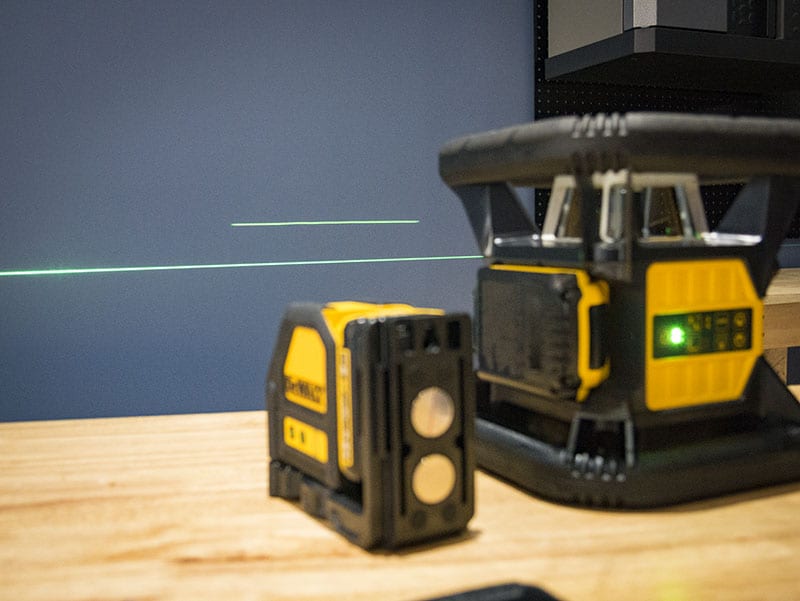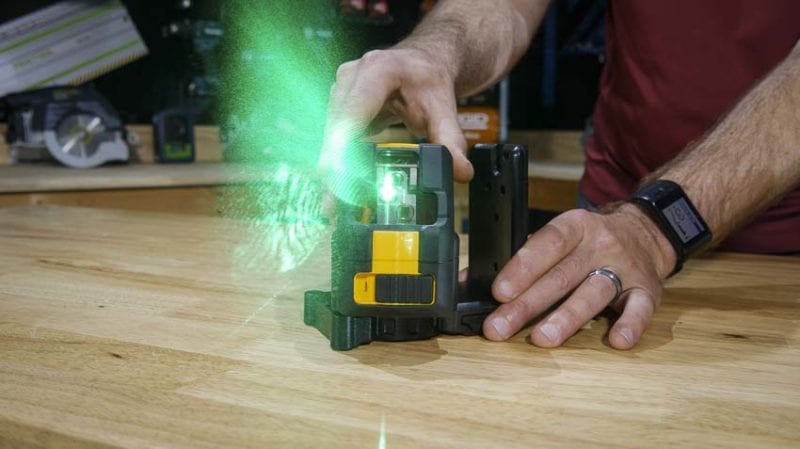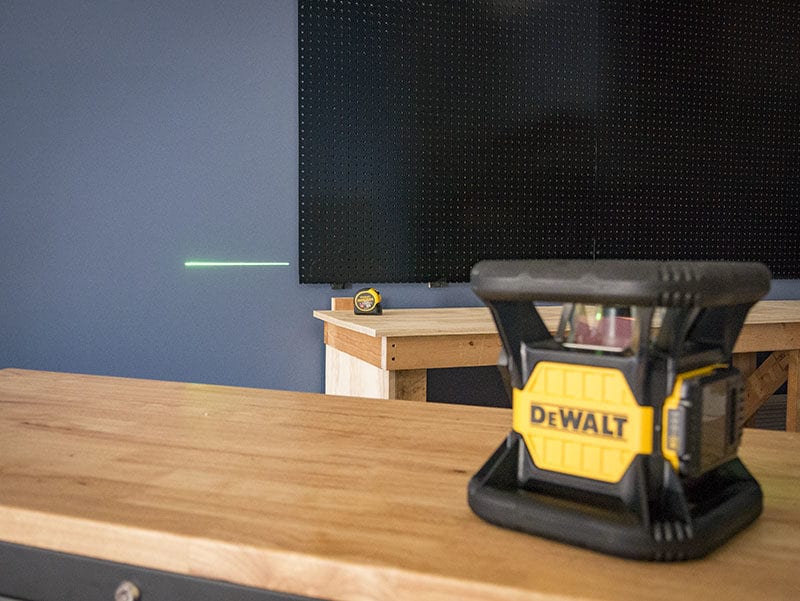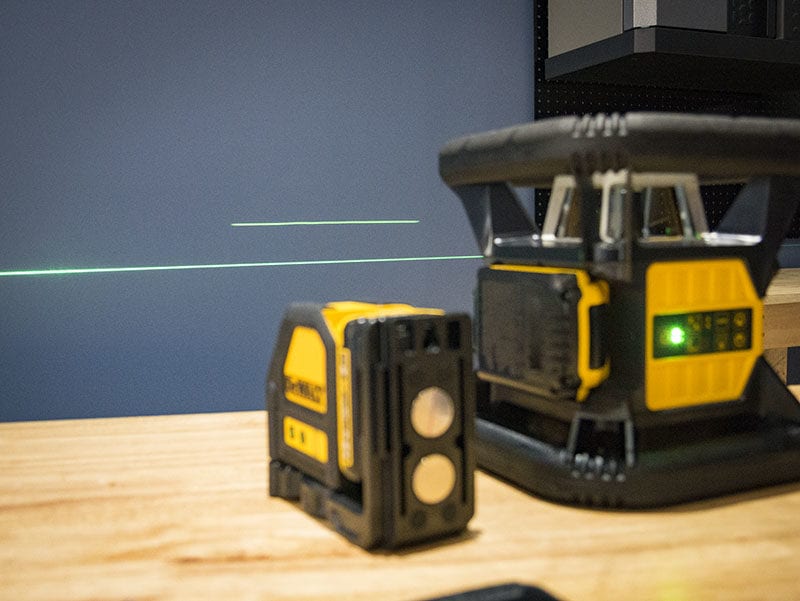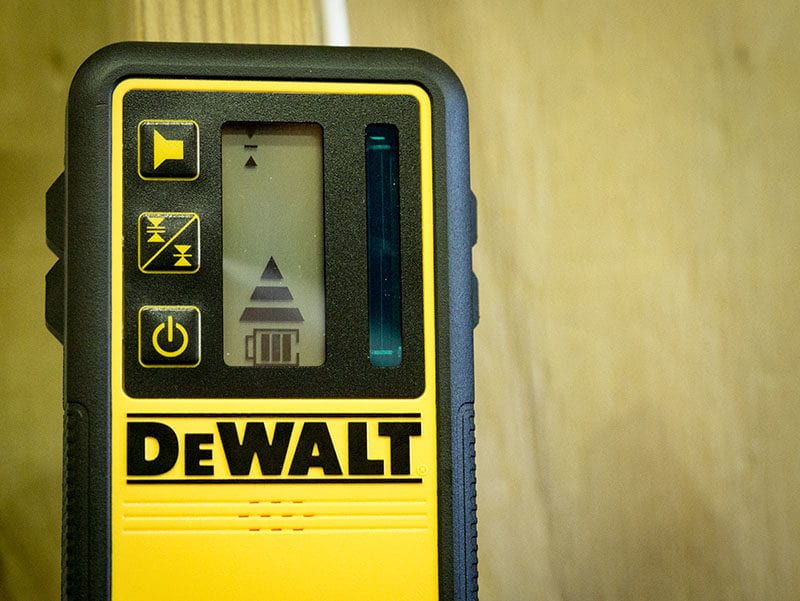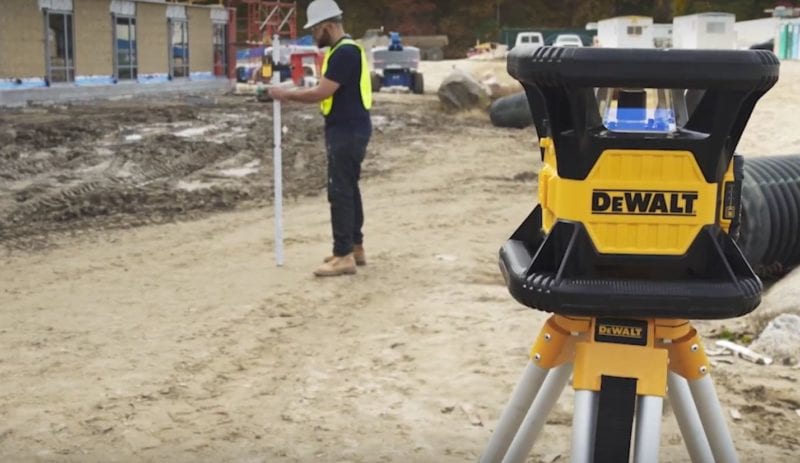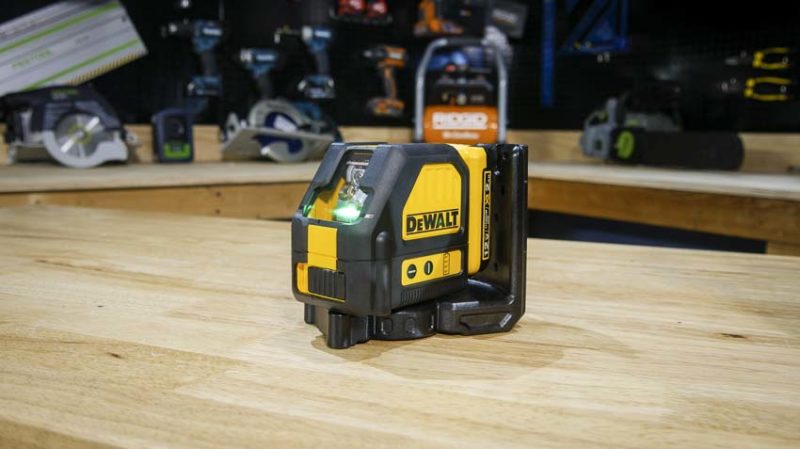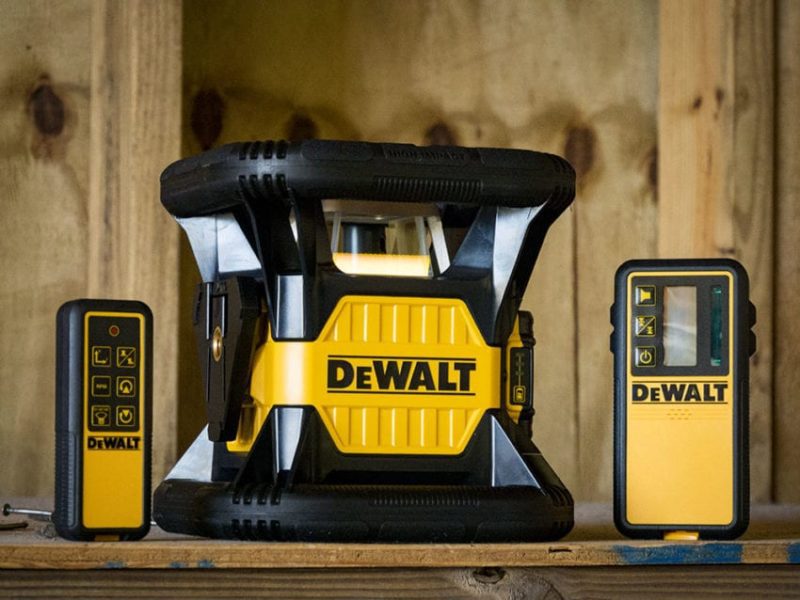One of our readers asked, “Can I use a rotary laser inside or do I need a cross line laser for leveling?” Great question, let’s jump on the idea of rotary vs cross line laser for interior installations.
The easy answer is yes, you can. But a cross line laser is the better choice. Let’s look at the rationale.
Editor’s Note: Check out our best laser levels article to get our top recommendations.
Can I Use a Rotary Laser Inside?
Visibility
A cross line laser uses a prism to deflect the laser in roughly 180 degrees vertically, horizontally, or both. That creates a bright, steady beam that’s very easy to see.
A rotary laser sends out its laser beam through a single point diode. This gives it much greater range (more than 10x the range in most cases), but the fact that it rotates means the laser is only on your target area part of the time.
From a visibility standpoint, the cross line laser appears brighter thanks to its steady state. The rotary laser can get closer to the appearance of a steady state by increasing the rotation speed, but it fades as you do. Some rotary lasers, like our DeWalt, will allow you to restrict the beam to a certain angle like 15, 45, or 90 degrees. That will keep the beam on more of your work area for a greater percentage of the time.
Range
It’s true that the rotary laser has a much greater range since it’s not spreading out its beam. For example, our DeWalt 20V Max Green Tough Laser can work out to 2000 feet while our DeWalt 12V Max Green Cross Line Laser is good out to 160 feet.
But we’re talking BVR – beyond visible range – for the rotary laser. It visibly fades much closer than the cross line laser, but the beam continues and can be paired with a receiver to work with what you can’t see.
So cross line lasers get the win for greater visibility, but rotary lasers are vastly superior in overall range. When it comes to answering our reader’s question, though, no one wants to install cabinets using a barely visible line or holding a laser receiver. The longer visible line of the cross line laser wins for this application.
Rotary vs Cross Line Laser Accuracy
Our DeWalt cross line laser has an accuracy of 1/8-inch while the rotary laser is at 1/16-inch. But that’s not the whole story. The cross line laser’s accuracy is based on 33 feet while the rotary laser is at 100 feet. That means the apples to apples level of error is 3/8-inch at 100 feet for the cross line laser and still 1/8-inch at 100 feet for the rotary laser – a 200% increase in error over the rotary model.
Advantage rotary laser.
You can minimize the error in your installation by keeping the cross line laser as close as you can comfortably work with it. Most installations can tolerate a 1/8-inch of error over 33 feet.
Price
There’s a big gap in price between rotary lasers and cross line lasers and there’s a premium if you want to go green. Our DeWalt DW088LG will set you back $349. That’s not cheap, but the DeWalt Dw079LG is $1299.
The Bottom Line: Rotary vs Cross Line Laser for Interior Use – Yes or No?
There’s no doubt that the cross line laser is the better bet for most interior applications, whether you’re installing cabinets, stairs, tile, or anything else that requires a straight line. The visibility is far greater, especially if you go with a green laser.
Even though the rotary laser is more accurate, setting up your cross line laser close to you will ensure that your error is less than 1/8-inch. That’s acceptable for most installation tasks. You can always double check with a digital level if it needs to be as close to perfect as you can make it.
And if you haven’t made a purchase yet, the cross line laser is much less expensive.
That said, it is possible to use a rotary laser for the same installations. Put the laser as close to the work area as you can comfortably work and turn the RPMs down as much as you can to get the brightest beam you can. If you’re able to limit it to a 45-degree beam, that will help the visibility as well. Even though you’ll lose some of the brightness, turning up the RPMs will get you closer to a steady beam.
Where most Pros turn to a rotary laser inside is during the construction process of large buildings, not for finishing out new or remodel structures.
Pros of Using a Rotary Laser for Interior Work
- Greater overall range for wide-open spaces
- Needs a receiver for BVR (beyond visible range) work
- Greater accuracy (typically)
Cons of Using a Rotary Laser for Interior Work
- Expensive
- Bulkier to move, mount, and position
Pros of Using a Cross Line Laser for Interior Work
- Excellent visible range
- Lower cost
- The steady-state beams are easy to see
Cons of Using a Cross Line Laser for Interior Work
- Shorter overall range
- Lower output and accuracy over higher-end rotary laser models

